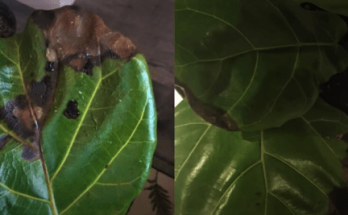Introduction
Snake plants, scientifically referred to as Sansevieria, have gained popularity as indoor plants due to their captivating appearance and low maintenance. However, it can be disconcerting when your snake plant starts displaying yellow leaves. In this article, we will explore the various factors that contribute to the yellowing of snake plants and provide effective remedies to revive their lush green hue.

Causes of Yellowing in Snake Plants:
Excessive Watering: One of the primary culprits behind yellow snake plant leaves is overwatering. These plants thrive in arid conditions and have adapted to survive in low-water environments. When overwatered, the roots may suffer from rotting, hindering nutrient absorption and resulting in yellowing leaves.
Insufficient Watering: Conversely, underwatering can also cause snake plant leaves to turn yellow. Inadequate watering leads to dehydration, causing the leaves to wither and lose their vibrant green color.
Poor Drainage: Insufficient drainage in the plant’s pot contributes to yellowing leaves. When excess water is unable to escape, it saturates the soil, creating a waterlogged environment. This can suffocate the roots and ultimately lead to leaf discoloration.
Inappropriate Lighting Conditions: Snake plants are adaptable to varying light requirements, but they thrive best in indirect light or moderate shade. Placing them in direct sunlight for prolonged periods can result in sunburn, causing the leaves to turn yellow.
Temperature Stress: While snake plants are generally hardy, extreme temperature fluctuations, particularly exposure to cold drafts, can stress the plant and cause yellowing of the leaves.
Nutrient Deficiency: Like all plants, snake plants require essential nutrients for healthy growth. Insufficient fertilization or nutrient deficiencies can manifest as yellow leaves.
Remedies to Restore Your Yellowing Snake Plant:
Adjust Watering Routine: Achieve the right balance by watering your snake plant when the top inch of soil feels dry. Ensure that the pot has proper drainage to prevent water accumulation. Avoid both overwatering and underwatering.
Improve Drainage: If your snake plant’s pot lacks drainage holes, consider repotting it into a container with adequate drainage. This will prevent water from pooling and allow the roots to breathe.
Provide Optimal Lighting: Place your snake plant in a location where it receives bright, indirect light. Shield it from direct sunlight, particularly during hot summer months, to prevent leaf sunburn.
Maintain Consistent Temperatures: Keep your snake plant away from cold drafts and maintain a stable temperature ranging from 60°F to 85°F (15°C to 29°C). Avoid placing it near heating or cooling vents.
Appropriate Fertilization: Utilize a balanced, water-soluble fertilizer specifically formulated for houseplants. Follow the manufacturer’s instructions to ensure proper nutrient provision without over-fertilization.
Check for Pests and Diseases: Regularly inspect your snake plant for signs of pests or diseases, such as spider mites or fungal infections. Address any issues promptly using suitable organic or chemical remedies.
By implementing these remedies and gaining insights into the potential causes of yellowing in your snake plant, you can revive its vitality and restore its lush green color. Remember to closely observe your plant and make necessary adjustments accordingly. With attentive care and proper nurturing, your snake plant will thrive and remain a captivating addition to your indoor space.
Frequently asked question- FAQ
Can I save a snake plant with many yellow leaves?
Yes, you can save a snake plant with yellow leaves by identifying and addressing the underlying cause. Follow the care tips mentioned in this article to improve its health.
What does overwatering look like in a snake plant?
Overwatering in a snake plant may cause yellow leaves with mushy and soft roots. The plant may appear droopy, and the soil might be consistently wet.
How often should I water my snake plant?
Water your snake plant when the top inch of soil feels dry to the touch. The frequency of watering will depend on environmental factors like temperature and humidity.
Can yellow leaves turn green again?
If the cause of the yellowing is addressed promptly, new growth should emerge with healthy green leaves. However, severely damaged leaves may not revert to their original color.
Is it normal for snake plants to shed leaves?
Yes, it’s normal for older leaves at the base of the plant to yellow and eventually die off. Simply trim these leaves close to the soil level to maintain the plant’s appearance.

